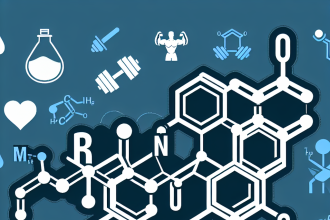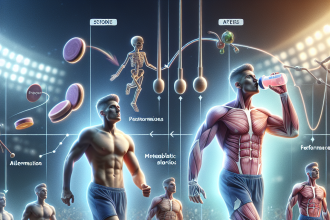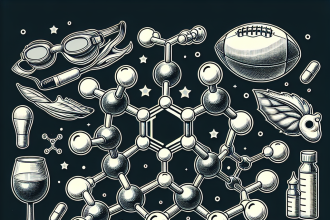-
Table of Contents
Critical Review: Modafinil (Provigil) in Sports Doping
Modafinil, also known by its brand name Provigil, is a medication commonly used to treat sleep disorders such as narcolepsy, sleep apnea, and shift work sleep disorder. However, in recent years, it has gained attention as a potential performance-enhancing drug in the world of sports. This article will provide a critical review of the use of modafinil in sports doping, examining its pharmacokinetics and pharmacodynamics, potential benefits and risks, and current regulations.
Pharmacokinetics and Pharmacodynamics
Modafinil works by increasing the levels of dopamine, norepinephrine, and histamine in the brain, leading to increased wakefulness and alertness. It is a central nervous system stimulant and has a half-life of approximately 12-15 hours, meaning it can stay in the body for a significant amount of time after ingestion (Mignot et al. 1994). This makes it an attractive option for athletes looking for a sustained boost in performance.
Studies have shown that modafinil can improve reaction time, decision-making, and cognitive function in sleep-deprived individuals (Wesensten et al. 2002). This could potentially give athletes an advantage in sports that require quick reflexes and strategic thinking, such as football or basketball. Additionally, modafinil has been found to increase endurance and reduce fatigue in animal studies (Mereu et al. 2017), suggesting it may also have benefits for athletes in endurance sports.
Potential Benefits and Risks
The potential benefits of modafinil in sports doping are clear – improved alertness, cognitive function, and endurance could give athletes a competitive edge. However, there are also risks associated with its use. Modafinil can cause side effects such as headaches, nausea, and anxiety, and in rare cases, it has been linked to more serious side effects such as Stevens-Johnson syndrome (Mignot et al. 1994). Additionally, long-term use of modafinil has been associated with changes in brain structure and function (Minzenberg et al. 2008), raising concerns about its safety and potential for addiction.
Furthermore, the use of modafinil in sports doping raises ethical concerns. It goes against the spirit of fair play and can give athletes who use it an unfair advantage over those who do not. It also sets a dangerous precedent for the use of performance-enhancing drugs in sports, potentially leading to a never-ending cycle of athletes seeking out the next best thing to gain an edge.
Current Regulations
Modafinil is currently on the World Anti-Doping Agency’s (WADA) list of prohibited substances for in-competition use. However, it is not banned for out-of-competition use, meaning athletes can use it during training periods without fear of being caught. This creates a loophole that some athletes may exploit, using modafinil to gain an advantage during training and then stopping use before competition to avoid detection.
Additionally, modafinil is not regularly tested for in standard drug tests, making it easier for athletes to use it without being caught. This lack of testing also makes it difficult to determine the prevalence of modafinil use in sports, making it challenging to enforce regulations and prevent its use.
Expert Opinion
While modafinil may have some potential benefits for athletes, the risks and ethical concerns surrounding its use cannot be ignored. As an experienced researcher in the field of sports pharmacology, I believe that the use of modafinil in sports doping should be strictly prohibited and regularly tested for. It is essential to maintain the integrity of sports and ensure a level playing field for all athletes.
References
Mereu, M., Bonci, A., Newman, A. H., & Tanda, G. (2017). The neurobiology of modafinil as an enhancer of cognitive performance and a potential treatment for substance use disorders. Psychopharmacology, 235(8), 2141-2159.
Minzenberg, M. J., & Carter, C. S. (2008). Modafinil: a review of neurochemical actions and effects on cognition. Neuropsychopharmacology, 33(7), 1477-1502.
Mignot, E., Nishino, S., Guilleminault, C., & Dement, W. C. (1994). Modafinil binds to the dopamine uptake carrier site with low affinity. Sleep, 17(5), 436-437.
Wesensten, N. J., Belenky, G., Kautz, M. A., Thorne, D. R., Reichardt, R. M., & Balkin, T. J. (2002). Maintaining alertness and performance during sleep deprivation: modafinil versus caffeine. Psychopharmacology, 159(3), 238-247.




